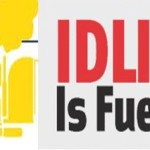
Whether it’s a mechanical problem or an accident, a fleet will inevitably incur downtime. Even with a highly responsive rescue or emergency management programs, there is definitely a cost associated with when drivers aren’t driving.
Downtime costs are important factors in running a fleet. Determining how much they are begins with knowing what the component costs are, and developing a formula by which they can be applied to events. In putting a value to downtime cost, it’s imperative to:
Know your drivers’ employment costs, including salaries, benefits, even bonuses and commissions.
Know the productivity costs.
Track downtime in detail.
There are costs incurred when investing in mobile assets. Some of them are variable such as fuel, maintenance and repair, and tyres and they change as use changes. Some are fixed costs such as depreciation and insurance which are related to simply having those vehicles.
The standard categories of fleet cost are “hard” costs, expending company funds when incurred. And, “soft” costs, those that don’t necessarily result in a direct expenditure, but are every bit as real as hard costs. When drivers aren’t driving, when they aren’t out doing the job because of a mechanical problem or an accident, they incur downtime costs, which can be both hard and soft, and they add hundreds of thousands of naira to a fleet’s budget.
Understanding Downtime
There is little formal research surrounding fleet drivers’ downtime; however, it isn’t difficult to define it, determine causes, quantify costs, and manage it.
Truck drivers depend on vehicles to do their jobs. They use vehicles to provide service to customers, carrying tools, parts, and products. Whatever the mission, it cannot be accomplished without the use of a vehicle.
When vehicles are down either due to the need for mechanical repairs or involvement in an accident, or stolen, there is a period of time when drivers are also down, unable to perform their jobs.
Until a driver is back on the road, downtime causes the company to incur expense, both hard and soft, that otherwise would not occur:
Hard costs involve actual expenditures related to the downtime.
Soft costs are not the actual use of funds directly related to the problem, but costs incurred during the time the driver is lacking transportation.
Estimating the Cost
Before any expense can be managed, it must be identified. Identifying downtime costs is not quite as simple as it sounds, however, smart fleet managers know how to go about it.
To illustrate how downtime costs are incurred, we can use a hypothetical series of assumptions, first about the driver.
Let’s assume that the total compensation portion of driver cost is N600,000.00 per year in salary and benefits. The driver produces N16million per year in revenue for the company (Service revenue), from which the company enjoys a 15 net profit margin, or N2,400,000.00 This can be illustrated as follows:
Salary: N480,000.00 per year
Benefits: N120,000.00 per year
Production: N16 million per year
Net-profit margin: 15%
The next step in quantifying downtime is to reduce the above annual costs to hourly and/or daily costs. Assuming 300 working days per year and a 10-hour working day, the calculations are as follows:
Daily cost: 600,000/300 = N2,000 per day
Hourly cost: N2,000/10 = N200 per hour
Further, any time the driver is unable to perform the job due to fleet downtime costs the company lose revenue money as well:
N2,400,000/300 = N8,000 per day
N8,000/10 = N800 per hour
These are the employment costs (salary and benefits) the company incurs to employ the driver, and the productivity the company loses when the driver is down, unable to work. The former are direct, hard costs; the latter are opportunity, or soft costs.
A loss of productivity doesn’t cause the company to actually expend funds; however, it does cause the company to forego the revenue that the driver produces when working. Combining these costs shows that each hour the driver is down, the cost of that time is N1,000.00.
Downtime Costs by Event
The most common causes of downtime are related to either mechanical problems or accidents — in other words, specific events. There are other causes, but mechanical breakdowns and accidents are the most common reasons for downtime.
Mechanical Breakdowns:
Mechanical breakdowns in more developed countries are far less common today than 20 years ago. Vehicles are built better and problems are diagnosed much quicker and more accurately than ever. But unfortunately, they still do occur. In a country like Nigeria where most haulage businesses are leveraging on used vehicles including those that are far beyond their prime and the diagnostics infrastructure aren’t anywhere near “quick and accurate”, the frequency and severity of mechanical breakdowns is better left to the imagination.
The hourly cost of downtime would simply be the number of hours from the time the vehicle breaks down until the driver is able to get back out on the road. However, event costs will include the cost of the repair itself (which becomes worse if vehicle is not under a comprehensive cover) and any replacement rental vehicle which can be used.
Sometimes in the case of some special service vehicle (e.g. Cement tanker), replacement rentals are not practical or immediately feasible, especially where loading and offloading of goods to the rig requires specialized tools only available at the factory site and depot.
Downtime from Accidents
Accidents create an entirely different set of costs; costs that can possibly be far greater. Here is a typical sequence of events when a driver is involved in an accident:
After the accident has occurred, and the driver has learned of any injuries to him or other parties, a call is made to the fleet department, or to the accident management provider. An accident report is taken (on the phone), and the vehicle is either driven (if safe and legal) or towed to a repair facility.
Concurrently, a relief truck (either from the pool or commercially rented) is booked for the driver; it is usually delivered to the driver at the repair facility or accident scene where towing of accidented vehicle and goods is not immediately feasible. At this point, once any material or product is transferred, the driver is now able to return to the job. An estimate for repairs is provided by the shop, negotiated, and repairs begin.
Once repairs are completed, the driver is notified, returns to the shop to pick up the vehicle, and the relief vehicle returned to its beat.
In cases where a service-type vehicle is damaged, and there is no practical relief vehicle to provide, the drive will be unable to return to the job until repairs are complete.
It is clear that the event costs here can be far greater than with any mechanical problem. Downtime begins as soon as the driver leaves the vehicle; no doubt the trauma of the accident, gathering information from any third party, and calling in the accident report can take several hours, hours at the N1000 rate assumed. Rental of towing vehicle (or fueling and mobilization from pool), journey to the repair shop and waiting for the replacement rental can add additional hours.
In the unfortunate event a driver is injured, whatever time he or she must take to recover can further add hundreds of hours or more of downtime.
Finally, there is downtime when the driver has to return to the shop, approve the repairs, and return the relief vehicle. All of this can add up to thousands of naira in downtime costs.
Where the driver is able to immediately get back out on the road doing the job again, downtime ceases and therefore other incidental costs of an accident such as the cost of the rental vehicle, the possibility of both personal injury and physical damage liability, and the cost of the repair itself aren’t considered downtime costs.
Other Causes of Downtime
Other than these serious events, there can be other causes of downtime, many of which are entirely preventable either by fleet managers or by drivers:
Expired emblems/tags/registration.
Registration renewal denied due to unpaid violations.
Car towed/impounded due to illegal parking.
Emergency road service issues, i.e., lockout, out of fuel, dead battery, or flat tyre.
Except for the occasional dead battery or flat tyre, all of the above are preventable. In such cases, some fleets will consider charging the fleet manager or maintenance manager or driver back for costs incurred, sometimes even for the downtime.
Some downtime is actually scheduled, predictable to the extent that the company requires the driver to do something related to, but not directly involved in, the job including sales meetings, union meetings, conferences, presentations, and other company events. There is a cost to this (a driver attending a sales meeting isn’t calling on customers), however it is necessary and justifiable downtime.
Concluding Remarks
Downtime costs are important factors in running a fleet. Determining how much they are begins with knowing what the component costs are, and developing a formula by which they can be applied to events.
Know your drivers’ employment costs, including salaries, benefits, even bonuses and commissions.
Know the productivity costs. Although these are not hard costs, when drivers are not able to work due to a vehicle problem, they cannot produce revenue. This is an “opportunity” cost.
Track downtime in detail. Fleet managers should not merely accept “repair time” as downtime. As in the accident example above, downtime occurs from the moment the accident does, and until the driver is able to get back on the road.
Estimate how long the average accident reporting call takes, and how long it takes from the time a replacement rental is reserved until it is delivered.
The costs of downtime are an important factor in determining fleet productivity. When cars break down, or need repairs due to an accident, drivers must spend time dealing with it, and that is time away from customers. Proactive Fleet Managers are smart to know what those costs are, and to have a means by which they can be tracked, managed and mitigated.






